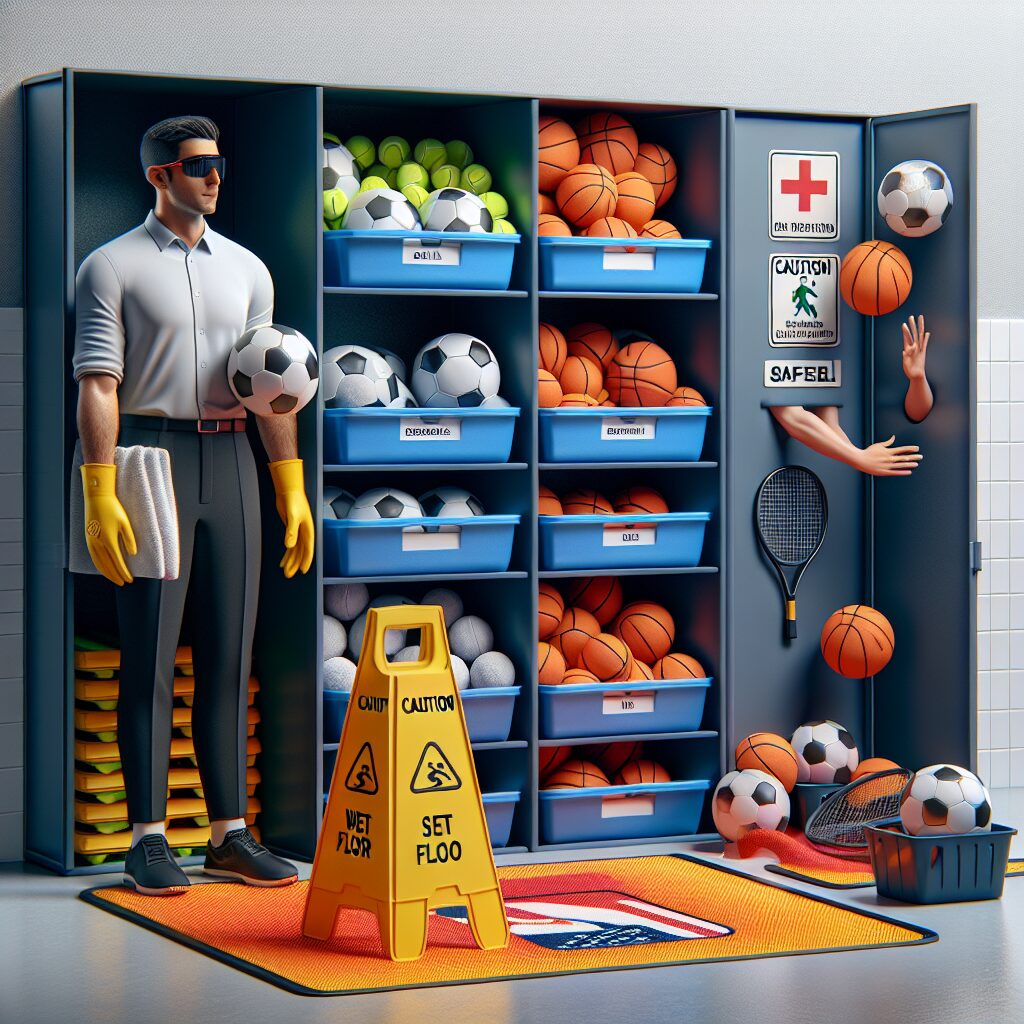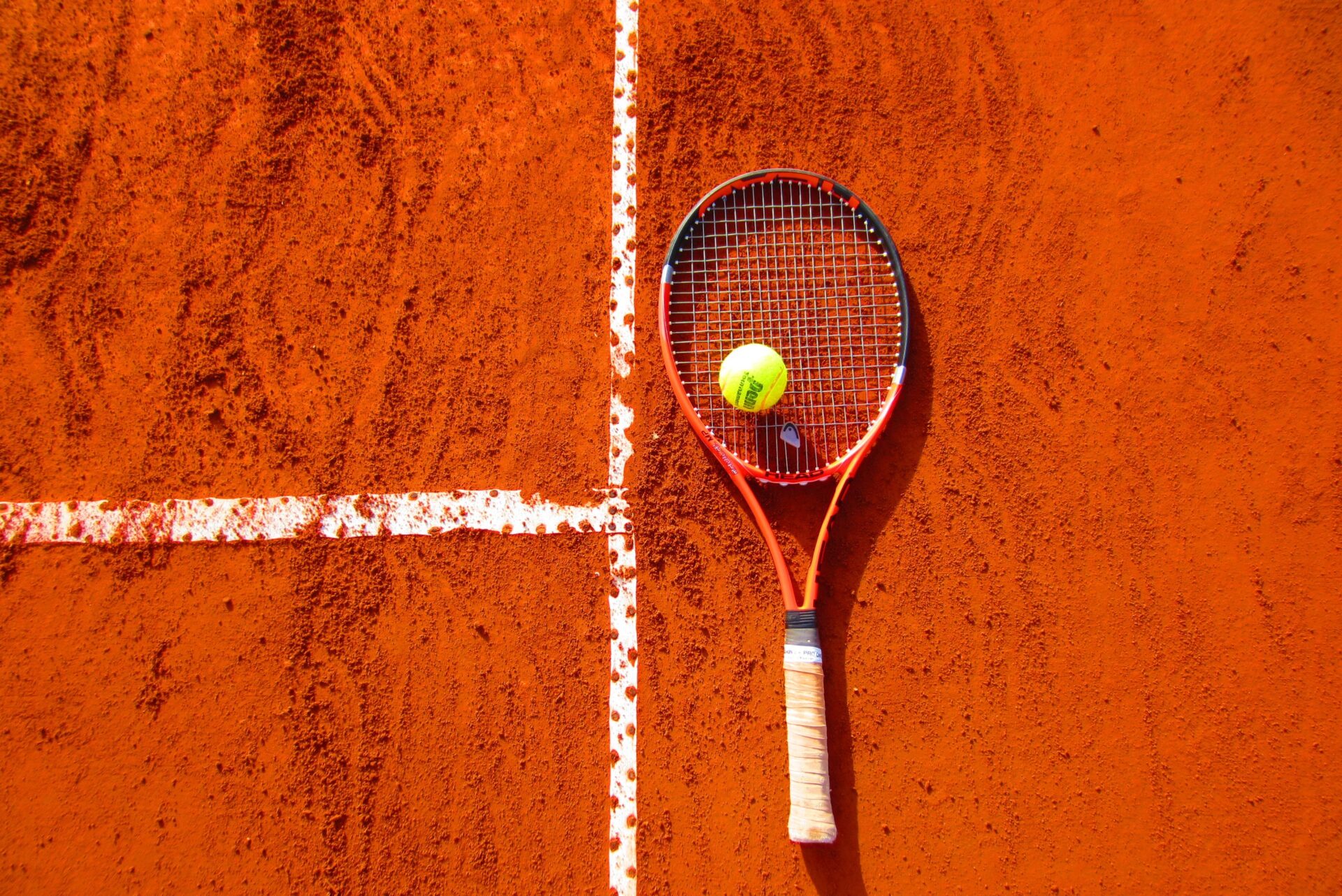Safety Measures in Ball Storage: Injury Prevention
Did you know that improper storage of sports equipment, specifically balls, can lead to serious injuries? Many sports enthusiasts overlook the importance of proper ball storage, focusing more on the game itself. However, implementing safety measures in ball storage is crucial to prevent injuries and ensure the longevity of the equipment.
Improperly stored balls can pose various risks, including tripping hazards and injuries from falling objects. Imagine a cluttered storage area where basketballs, soccer balls, and baseballs are haphazardly stacked or strewn about. In such a chaotic environment, one wrong step could result in sprained ankles or even more severe injuries. Additionally, storing balls in unsuitable conditions, such as extreme temperatures or high humidity, can lead to degradation of the materials and decreased performance.
Now that you understand the potential risks associated with improper ball storage, let’s discuss some key takeaways to ensure safety and prevent injuries. We will explore practical measures such as proper organization, suitable storage containers, and environmental considerations to protect both players and equipment. Following these guidelines will not only reduce the risk of accidents but also contribute to a better playing experience and prolonged lifespan of your sports equipment. Stay tuned for our next section, where we delve deeper into the importance of proper organization in ball storage.
Key Takeaways
1. Proper ball storage is essential in preventing injuries and maintaining safety in sports facilities.
2. Using designated storage racks or bins with sufficient capacity and weight tolerance helps prevent balls from rolling or falling, reducing the risk of accidents.
3. Regular inspection and maintenance of storage equipment, ensuring it is clean, in good condition, and free from any defects, is crucial for safe ball storage.
4. Implementing clear and visible signage with specific instructions for ball storage can help athletes and staff follow proper procedures, minimizing the potential for injuries.
5. Educating athletes, coaches, and staff about the importance of safe ball storage, including handling and storing guidelines, creates a culture of awareness and accountability, ultimately reducing the likelihood of injuries.
What are the Essential Safety Measures in Ball Storage to Prevent Injuries?
1. Choosing the Right Storage Area
One of the crucial safety measures in ball storage is selecting an appropriate storage area. Ensure that the storage space is clean, dry, and free from any potential hazards. It should be well-lit and easily accessible for players and staff.
2. Determining Proper Ball Storage Methods
To prevent injuries, it is essential to use the correct ball storage methods. Consider the type and size of the balls when deciding on the storage options. Utilizing racks, shelves, or specialized storage bins can keep the balls organized and minimize the risk of accidents.
3. Regular Inspection and Maintenance
Regularly inspecting and maintaining the ball storage area is crucial for injury prevention. Check for any signs of wear and tear, such as damaged racks or shelves, and repair or replace them promptly. Additionally, examine the balls for defects or damages that could potentially cause injury during gameplay.
4. Proper Stacking and Arrangement
Stacking and arranging the balls correctly is essential to prevent accidents and injuries. Ensure that heavier balls are placed at the bottom, while lighter ones are on top to maintain stability. Avoid overloading racks or shelves to prevent collapse and potential injuries to players or staff.
5. Clear Signage and Labeling
Using clear signage and labeling is an important safety measure in ball storage. Clearly indicate the designated areas for different types of balls to avoid confusion and potential accidents. Moreover, label any hazardous sections or equipment to ensure everyone is aware and exercise caution.
6. Enforcing Strict Accessibility Rules
Enforcing strict accessibility rules is crucial for both player safety and the longevity of the ball storage area. Limit access to authorized personnel only to prevent mishandling or theft. Implement a robust system, such as secure locks or access cards, to control entry into the storage space.
Safety Measures in Ball Storage: Injury Prevention
- Always secure the balls properly using appropriate storage methods.
- Regularly inspect racks, shelves, and balls for any signs of damage.
- Avoid overloading storage areas to prevent collapse.
- Use clear signage and labeling to designate specific areas and alert individuals of potential hazards.
- Enforce strict accessibility rules to prevent mishandling and unauthorized access.
Frequently Asked Questions
1. What are the safety measures to prevent injuries in ball storage?
To prevent injuries in ball storage, it is important to ensure proper organization and arrangement of the balls. They should be placed in sturdy containers or racks to avoid any potential hazards. Additionally, labeling the containers with the type of ball and its weight will help in preventing injuries caused by using the wrong ball. Regular inspections for any damages or defects in the balls should also be conducted to maintain their safety.
2. How should balls be stored to minimize the risk of accidents?
Storing balls in a designated area away from heavy machinery or high-traffic areas is crucial to minimize the risk of accidents. The storage area should be well-maintained, clean, and free from any obstructions. It is advisable to store balls at waist height or lower, making them easily accessible without the need for reaching or climbing. Properly securing the balls with nets or straps can also help prevent them from rolling or falling and causing accidents.
3. Can using ball storage containers help reduce injuries?
Absolutely! Using ball storage containers designed specifically for this purpose can significantly reduce injuries. These containers are built to provide secure and organized storage, minimizing the chances of accidents. They often have features such as sturdy construction, well-fitting lids, and proper ventilation, ensuring the safety and longevity of the stored balls. Investing in quality ball storage containers is a smart step towards injury prevention.
4. Are there any specific guidelines for labeling ball storage containers?
Labeling ball storage containers is highly recommended for easier identification and prevention of accidents. It is advisable to label the containers with the type of ball stored inside. Additionally, mentioning the weight or size of the ball can be helpful. Clear and visible labels ensure that the right ball is used for specific activities, reducing the risk of injuries that may arise from using inappropriate balls.
5. How often should ball inspections be conducted?
Regular ball inspections are essential to ensure their safety and prevent injuries. Ideally, ball inspections should be conducted at least once a month or whenever balls are being used consistently. During the inspection, carefully examine the balls for any damages, cracks, or signs of wear and tear. If any issues are identified, the damaged ball should be immediately replaced or repaired to maintain a safe storage environment.
6. Can improper ball storage lead to long-term injuries?
Improper ball storage can indeed lead to long-term injuries. If balls are stored haphazardly or in unsafe conditions, they may become damaged or distorted over time. Using damaged balls can result in injuries such as sprains, strains, and more serious conditions. Therefore, it is crucial to ensure proper storage and maintenance of balls to avoid long-term injuries that could potentially impact an individual’s well-being and physical abilities.
7. Should individual balls be stored separately or can they be stacked?
Storing individual balls separately is always recommended. When balls are stacked, especially if they are of different types or sizes, it increases the risk of accidents when trying to retrieve a specific ball. Stacking can lead to balls rolling or falling unexpectedly, causing injuries. If space constraints exist, consider utilizing racks or shelves that provide designated spaces for each ball, keeping them organized and accessible while minimizing the risk of accidents.
8. Are there any additional safety measures to consider for outdoor ball storage?
Outdoor ball storage requires additional safety measures to protect them from environmental elements. It is crucial to ensure that the storage containers or racks used are weatherproof and can withstand exposure to rain, sunlight, or extreme temperatures. Periodically inspect these storage solutions for any signs of damage caused by weathering and replace them as needed. Additionally, securing outdoor ball storage against theft or unauthorized access is important to maintain safety and prevent injuries.
9. Can ball storage solutions help in preventing damage to the balls?
Absolutely! Proper ball storage solutions can effectively prevent damage to the balls. By providing a secure and designated space for each ball, they eliminate the risk of accidental impacts, falls, or exposure to harsh conditions. Storing balls in appropriate containers or racks also helps maintain their shape, integrity, and functionality, prolonging their lifespan. Investing in reliable ball storage solutions can save money in the long run by avoiding frequent ball replacements.
10. Are there any safety guidelines to follow when retrieving balls from storage?
Yes, there are safety guidelines to follow when retrieving balls from storage. Always maintain a safe distance from other stored objects to avoid collisions or injuries. Carefully handle the balls, especially if they are stored at higher levels, to ensure they don’t fall or roll unexpectedly. Be cautious of your surroundings and any potential hazards during the retrieval process. Following these guidelines will reduce the risk of accidents and injuries while retrieving balls from storage.
Final Thoughts
Safety measures in ball storage are vital for injury prevention and maintaining a secure environment. By strictly adhering to proper organization, labeling, and maintenance techniques, the risk of accidents and long-term injuries can be significantly reduced. Implementing suitable storage solutions, such as containers or racks designed for ball storage, further enhances safety and minimizes the chances of damage to the balls. Regular inspections and prompt replacement of damaged balls ensure a consistent level of safety. Remember, following these safety measures fosters a culture of injury prevention and contributes to a safe and enjoyable experience with ball-related activities.




